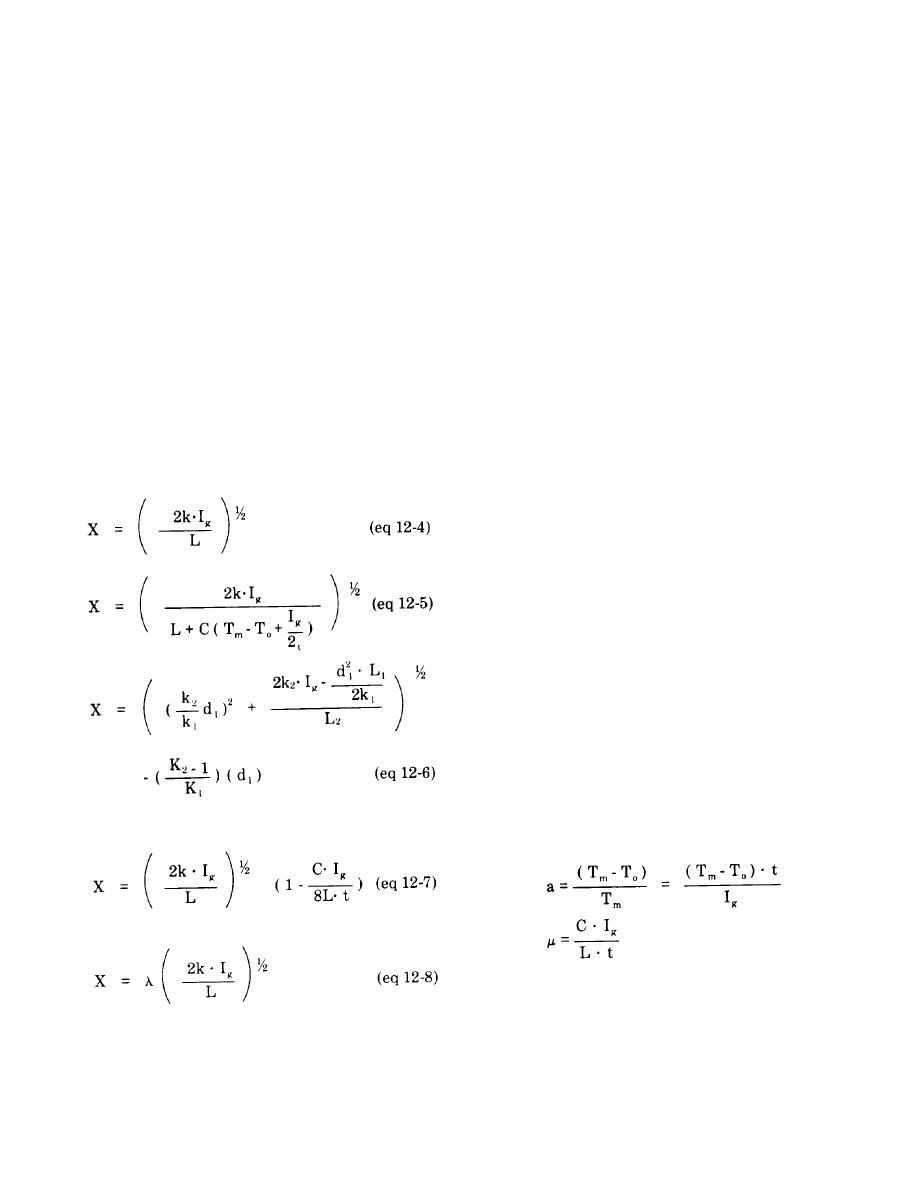
TM 5-852-5/AFR 88-19, Volume 5
solutions, such as assuming a step change in surface
where
temperature or neglecting the soil temperature
k
= thermal conductivity of the material
changes, they generally overestimate the maximum
above the freezing isotherm, kf for frost
freezing isotherm depths for the given conditions
penetration and kt for thawing calcula-
and are, therefore, conservative for engineering
tions, BTU/hrftEF.
applications. They are generally Neumann or Stefan-
based solutions which have the basic form:
L = volumetric latent heat of the material
undergoing phase change, BTU/cf (for
X = m(Ig)
(eq 12-3)
water L = [(144 BTU/lb) (62.4
pcf) ] = 8986 BTU/cf)
where
C = volumetric heat capacity of the material
above the freezing isotherm, Cf or C1.
X = depth of freezing or thawing, feet
For thawed soil: Ct = ( [ Cs + Cw
(w/100) ] and for frozen soil: Cf = ([ Cs
m = coefficient of proportionality
+ Ci(w/100)]
Ig = ground surface freezing (If) or
( = dry unit weight of soil, pcf
thawing (It) index, EFhr
Cs = mass heat capacity of mineral matter in
The following equations incorporate various as-
soil; assume a value of 0.2 BTU/lb
sumptions, and are useful for specific conditions:
Cw = mass heat capacity of water = 1.0
BTU/lb
Ci = mass heat capacity of ice, assumed value
of 0.5 BTU/lb
w = moisture content of soil, %
Tm = mean annual site temperature, EF
t
= freezing or thawing period, consistent
units
To = freezing point, 32EF for water
d
= thickness of layer of material, feet
8 = a correction coefficient which takes into
consideration the effect of temperature
change in the soil, and primarily
accounts for the volumetric specific heat
effects. It is a function of two
parameters. the thermal ratio (a) and the
fusion parameter (), and is determined
from figure 12-11:
Ts = Ig/t, surface freezing or thawing index
divided by the time period t, EF.
Subscripts f and t refer to freezing and thawing, and
subscripts 1 and 2 refer to the surface layer and the
underlying material (all symbols are also defined in
table 12-1).
12-14



 Previous Page
Previous Page
